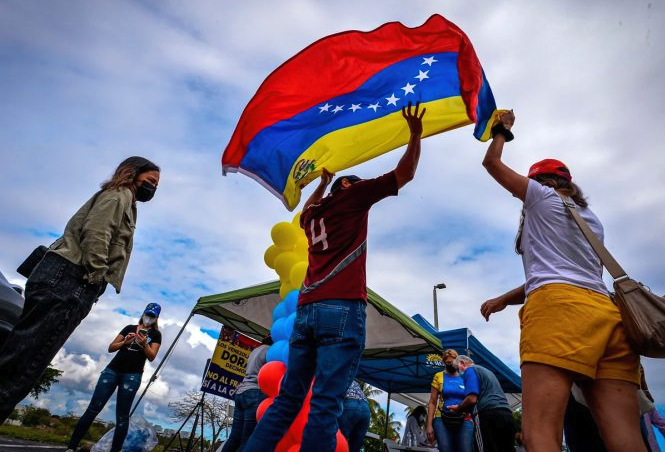Panama is currently facing one of the largest migration crises in the continent’s history, with thousands of migrants passing through the Darién Gap. This is one of the most inhospitable jungles in the world, where former guerrillas, drug traffickers, and human trafficking mafias converge.
The Darièn Gap is a 130-kilometer stretch that interrupts the Pan-American Highway, which runs from Chile to Alaska. It is estimated that in 2023, a record number of over half a million people crossed the Darién jungle heading to the United States. This number represents more than 12% of Panama’s population; if extrapolated to other migration crises, like those at the U.S. southern border or in southern Europe, it would mean enormous numbers for the receiving countries. Of these migrants in transit, more than 60% come from Venezuela, highlighting the deep social and political crisis affecting the Bolivarian country and its consequences in the region.
In his speech on September 25, 2024, at the United Nations Assembly, Panamanian President José Raúl Mulino emphasized these figures and called for greater international involvement, describing the human tragedy and its impact on Panama. He highlighted not only the economic burden (over $100 million in the last five years, according to Panama’s Ministry of Security), but also the severe environmental impact.
According to the study Social, Economic, Environmental, and Political Impact on Communities in the Republic of Panama from Extraregional Migrants Entering Through the Darién Gap by the Technological University of Panama, each migrant generates about 9 kilograms of waste during their journey. For a five-day journey, this amounts to 1.81 kg per day, totaling more than 900 tons of waste, considering the over half a million people who have passed through in 2023. It is important to note that Darién contains a 5,790 km² Biosphere Reserve, declared a World Heritage Site in 1981.
Between 2010 and 2021, slightly over 3,000 Venezuelans crossed the Darién, but in 2022 alone, this number exceeded 150,000, and in 2023, it doubled. One reason for the sharp increase in Venezuelan migration through the Darién was Mexico’s and several Central American countries’ decisions to require visas from Venezuelan migrants. This led many people, who could not legally reach Mexico, to cross through the Darién, demonstrating the need for coordinated responses rather than isolated actions by different countries.
In Panama, migration is not yet a primary concern for citizens. According to LAPOP Lab 2023 data, less than 1% of the population considers migration the country’s main issue. For migrants in transit, it’s important to note that the Darién is one of the least populated areas in the country, with only 1.3% of the national population living in the Isthmus’s largest province. Thus, only a small segment of the population witnesses the migrants’ transit. Nevertheless, 61% of those surveyed believe that Panama and the international community should assist these migrants in transit, and this figure rises to 71% among younger respondents. In other words, Panamanians show empathy for this situation.
However, opinions on welcoming migrants are more complex. It is important to consider that Panama has received a significant contingent of the Venezuelan diaspora. According to the UN Refugee Agency, 7.7 million people have left Venezuela, and over 6.5 million have been welcomed in 17 countries in Latin America and the Caribbean. In global terms, this means that over 25% of Venezuelans have left their country. In Panama’s case, the influx of Venezuelans has increased so much that, according to the 2023 census, they have become the second-largest migrant population after Colombians, coming very close to this group. If this rate of arrivals continues, the Venezuelan population could surpass the Colombian population at some point, marking a historic milestone.
LAPOP Lab data for 2023 showed that 73% of respondents have no problem with Venezuelans as their neighbors, and seven out of ten understand that due to their country’s extreme economic, political, and security difficulties, Venezuelans must relocate to Panama. However, these numbers contrast with 78% who believe that the Venezuelan population weakens national culture and 66% who think it worsens the economy, with the least wealthy segments being the most inclined to perceive these threats.
Panama has been known as a welcoming country, a “melting pot of races and cultures.” However, a situation resulting from successive crises caused by the pandemic and the impact of rising prices, aggravated by an international context of economic and political volatility, means that migration can generate very negative perceptions in host countries, requiring special attention to this phenomenon.
According to Panamanian migration authorities, as of September 2024, there has been a notable decrease in arrivals through the Darién, with a 35% reduction by September 25, 2024, which may indicate a trend reversal. These figures could suggest that repatriation measures and migration flow controls are proving successful in 2024. However, it is also important to note that, according to UNHCR, asylum requests from Venezuelans have increased by 25% since the elections, and new maritime transit routes are emerging.
The potential migration consequences of a worsening political crisis in Venezuela remain uncertain, but it is reasonable to propose greater international involvement, with appropriate monitoring and measures to manage this migration flow. The commitment of the United States, as the destination for these migrants in transit, is especially needed.













